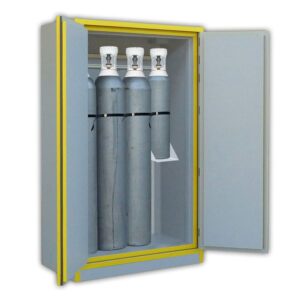Safety cabinets and spill kits are indispensable tools for managing hazardous materials and responding to spills effectively. However, their effectiveness relies on proper maintenance and regular inspection to ensure they remain functional and compliant with safety regulations. In this article, we discuss best practices for maintaining safety cabinets and spill kits to maximize their performance and longevity.
Establishing Inspection Protocols
Regular inspection is crucial for identifying any issues or deficiencies in safety cabinet and spill kits promptly. Establish a comprehensive inspection protocol that includes routine checks for structural integrity, cleanliness, and functionality. Inspect cabinets for signs of corrosion, damage, or leaks, and ensure spill kits are adequately stocked with absorbent materials, PPE (personal protective equipment), and cleanup tools.
Conducting Preventive Maintenance
In addition to routine inspections, preventive maintenance measures help prolong the lifespan of safety cabinets and spill kits and prevent potential failures or malfunctions. Schedule regular maintenance tasks such as cleaning, lubricating hinges and locking mechanisms, and replacing worn or damaged components. Follow manufacturer recommendations for maintenance intervals and procedures to ensure optimal performance and compliance with safety standards.
Training and Education
Proper training and education are essential for ensuring that personnel understand how to use safety cabinets and spill kits effectively. Provide comprehensive training sessions on the proper storage and handling of hazardous materials, as well as procedures for spill response and cleanup. Emphasize the importance of following safety protocols and guidelines to minimize risks and prevent accidents in the workplace.
Emergency Preparedness
Maintaining readiness for emergency situations is crucial when dealing with hazardous materials. Ensure that employees know how to access safety cabinets and spill kits quickly in the event of a spill or accident. Conduct regular drills and simulations to practice emergency response procedures and reinforce proper protocols. Additionally, establish communication channels and protocols for notifying relevant personnel and authorities in the event of a spill or emergency situation.
Documentation and Record-Keeping
Keep detailed records of maintenance activities, inspections, and any incidents involving safety cabinets or spill kits. Maintain a log of inspection dates, findings, and corrective actions taken to address identified issues. Documentation not only helps track the maintenance history of these critical safety tools but also provides a valuable resource for audits, regulatory compliance, and continuous improvement efforts.
Conclusion
Effective maintenance and proper care are essential for ensuring the reliability and effectiveness of safety cabinets and spill kits in hazardous material management. By establishing inspection protocols, conducting preventive maintenance, providing training, and maintaining readiness for emergencies, businesses can maximize the performance and longevity of these critical safety tools. Prioritizing maintenance and adherence to safety protocols contributes to a safer work environment and reduces the risk of accidents and environmental harm associated with hazardous material handling.


No comments yet